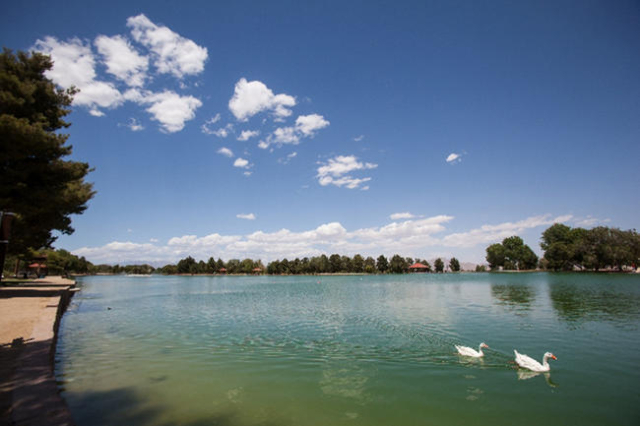Sunset Lake visitors should help keep area clean

The Federal Land Policy and Management Act of 1976 basically lays the modern foundation and establishes policy for the management of America’s public lands.
One of the guiding principles of the law is that of multiple use, the premise that our public lands should be managed in ways that makes them available to people representing a variety of interests ranging from agriculture to mining, from scientific to historical, and from energy development to conservation and outdoor recreation.
Managing public resources while considering such a wide array of interests creates a significant challenge for public lands and natural resource managers. The same probably can be said about managers of the public parks in the Las Vegas Valley, albeit on a much smaller scale.
Consider Sunset Regional Park, for example. First opened to the public in 1967, Sunset Park sits on 325 acres, of which 185 are developed. As the developed portion of the park has grown though the years, so, too, has the number and variety of amenities available in the park. And let’s not forget the increasing number of visitors who come seeking an ever widening range of predetermined park experiences.
One of the most used areas of the park is Sunset Lake, a 14-acre impoundment that serves as its centerpiece. With a maximum depth of 12 feet, Sunset Lake offers visitors a respite of sorts from our desert environment. Among them are anglers who can enjoy the fishing experience without having to travel a considerable distance. This is especially beneficial for more mature anglers whose bodies no longer can negotiate the rugged shoreline of Lake Mead or Lake Mohave, and for youthful anglers who need something a little more convenient.
Sunset Lake is stocked with rainbow trout during the cool winter months and with channel catfish during the spring and summer when water temperatures are too warm for trout to survive. While these fish are the primary draw for anglers, there also are viable populations of bluegill, redear sunfish, black crappie and largemouth bass in the lake. A bass pushing the 10-pound mark was caught in 2002, and it was there that my youngest son caught his first limit of trout.
This lake is so popular with local anglers that you can find someone fishing from its shores nearly every day of the year. That is a good thing. What isn’t good, is that we sometimes forget we aren’t the only park visitors who enjoy Sunset Lake. There are birders who come to enjoy the various species of fowl and other wildlife that can be found along the lake’s shoreline, as well as dog walkers, joggers, picnickers and others seeking an outdoor experience in an increasingly urban community.
When all of those varied interests come together, however, it creates a recipe for user conflict. For example, if someone is walking his dog and it leaves a deposit in the grass near your picnic spot, chances are you won’t be happy. That is a user conflict. Likewise, user conflict is created when someone leaves a dirty diaper or other garbage on the ground rather than placing it in a garbage can.
Some anglers create user conflict when they forget to consider the impact of their behavior on other park visitors. Despite the presence of multiple receptacles installed at locations around Sunset Lake, and the many trash cans scattered in between, some anglers choose to discard their tangled fishing line on the ground rather than placing it in one of the many containers available to them. While any trash can be unsightly, unwanted fishing line actually creates a hazard for birds or even pets that can become entangled in the line. Obviously, such an event is not good for the bird involved, and it also creates a conflict between bird enthusiasts and anglers.
Though some conflict is inevitable in a multiple-use arena, each of us — regardless of our recreational interest — can take steps to minimize our impact on other users. Perhaps the biggest step is to simply consider the potential impact of our actions on those around us.
For those of us who fish at Sunset Lake, this means considering the potential impact of fishing line left laying on the ground rather than placing it in the trash or designated receptacle.
Though we can’t control what others choose to do, we can control our own actions. By being good park stewards, we can help others enjoy what Sunset Lake has to offer and ensure anglers will continue to do so as well.
Freelance writer Doug Nielsen is a conservation educator for the Nevada Department of Wildlife. His “In the Outdoors” column, published Thursday in the Las Vegas Review-Journal, is not affiliated with or endorsed by the NDOW. Any opinions he states in his column are his own. He can be reached at intheoutdoorslv@gmail.com.












